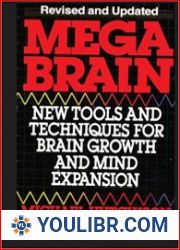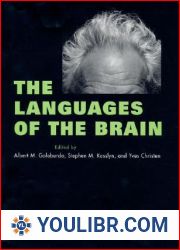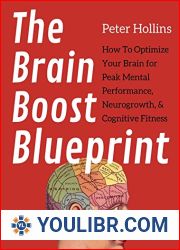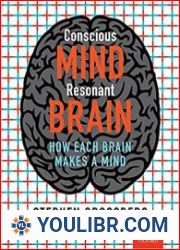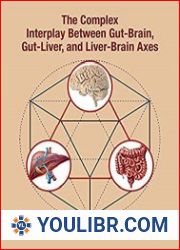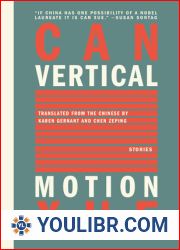
BOOKS - The Brain in Motion: From Microcircuits to Global Brain Function

The Brain in Motion: From Microcircuits to Global Brain Function
Author: Sten Grillner
Year: October 31, 2023
Format: PDF
File size: PDF 73 MB
Language: English
Year: October 31, 2023
Format: PDF
File size: PDF 73 MB
Language: English
An evolutionary perspective - from lampreys to humans - on how the forebrain coordinates movement while the networks in the brainstem and spinal cord handle the execution.All living creatures interact with their even the most basic have a set of innate motor circuits they rely on to feed, locomote, fight, and flee. In The Brain in Motion, Sten Grillner describes the evolution of the motor repertoire of vertebrates, from protovertebrates to primates. With breadth and depth, Grillner explores how the brain uses the different microcircuits in the brainstem and spinal cord, coordinating them through commands from the forebrain. He also considers the normal function of the brain as a platform for understanding clinical conditions such as stroke, Parkinson's and Huntington's diseases, and spinal cord injury.Grillner also explains in The Brain in Motion how the remarkable finding that the lamprey forebrain has all the components of the mammalian one has radically changed scientists' views on the evolutionary origin of the vertebrate forebrain. We now know that the basic organization evolved 560 rather than 300 million years ago, as was previously thought. The forebrain, says Grillner, is like an orchestra conductor, while the microcircuits, with their reaching, grasping, posture, locomotion, and numerous other patterns of behavior, correspond to the members of the orchestra. The conductor determines when each will be called into action.Providing an elegantly integrated perspective, The Brain in Motion is essential reading for anybody that works professionally with movement control and function and dysfunction, whether in basic research, clinically, or in the training of motor skills.
pdf 파일 다운로드 להוריד קובץ PDF PDFファイルをダウンロード descarregar ficheiro pdf télécharger le fichier pdf pdf dosyasını indir download pdf file descargar archivo pdf PDF-Datei herunterladen pobierz plik pdf download pdf file 下载 pdf 文件 скачать файл PDF تنزيل ملف pdf Scarica il file pdf
Prospettiva evolutiva - da minog a umani - di come il cervello anteriore coordina il movimento, mentre le reti nel tronco cerebrale e nel midollo spinale riescono a gestire l'esecuzione. Tutti gli esseri viventi interagiscono con i loro più importanti, hanno un insieme di catene motorie innate su cui si affidano per nutrire, localizzare, combattere e fuggire. Nel libro The Brain in Motion, Stan Grillner descrive l'evoluzione del repertorio motorio degli animali vertebrati, dai protosterebrati ai primati. A latitudine e profondità, la Grillner studia come il cervello utilizza diversi chip nel tronco cerebrale e nel midollo spinale, coordinandoli con comandi del cervello anteriore. Considera anche la normale funzione del cervello come una piattaforma per comprendere le condizioni cliniche come ictus, morbo di Parkinson e Huntington, e lesioni al midollo spinale. Grillner spiega anche in «Cervello in movimento» come la scoperta meravigliosa che il cervello anteriore dei minogui ha tutti i componenti del mammifero, ha cambiato radicalmente la visione degli scienziati sull'origine evolutiva del cervello anteriore dei vertebrati. Ora sappiamo che l'organizzazione di base si è sviluppata 560 e non 300 milioni di anni fa, come si pensava. Il cervello anteriore, dice Grillner, è come il direttore dell'orchestra, mentre i chip con la loro capacità, la presa, la postura, la locomozione e molti altri comportamenti corrispondono ai membri dell'orchestra. Il conduttore determina quando ciascuna viene chiamata all'azione. Fornendo una prospettiva elegantemente integrata, Cervello in Movimento è una lettura importante per tutti coloro che lavorano professionalmente con il controllo del movimento, la funzione e la disfunzione, sia nella ricerca di base, clinicamente o nell'allenamento di abilità motorie.
Evolutionäre Perspektive - von den Minogs bis zum Menschen - wie das Vorderhirn die Bewegung koordiniert, während die Netzwerke im Hirnstamm und im Rückenmark die Ausführung bewältigen. Alle Lebewesen interagieren mit ihren grundlegendsten, haben eine Reihe angeborener Bewegungsketten, auf die sie sich verlassen, um zu füttern, zu lokalisieren, zu kämpfen und zu fliehen. In The Brain in Motion beschreibt Sten Grillner die Evolution des motorischen Repertoires von Wirbeltieren, von Protovertebraten bis zu Primaten. Mit Breite und Tiefe untersucht Grillner, wie das Gehirn verschiedene Chips im Hirnstamm und im Rückenmark nutzt und diese mit Befehlen aus dem Vorderhirn koordiniert. Es sieht auch die normale Gehirnfunktion als Plattform für das Verständnis klinischer Zustände wie Schlaganfall, Parkinson und Huntington sowie Rückenmarksverletzungen. Grillner erklärt auch in dem Buch Brain in Motion, dass die bemerkenswerte Entdeckung, dass das Vorderhirn eines Minogas alle Komponenten eines Säugetiers hat, die Ansichten der Wissenschaftler über den evolutionären Ursprung des Vorderhirns von Wirbeltieren radikal verändert hat. Wir wissen jetzt, dass sich die zugrunde liegende Organisation vor 560 und nicht vor 300 Millionen Jahren entwickelt hat, wie bisher angenommen. Das Vorderhirn, sagt Grillner, sei wie ein Orchesterdirigent, während die Mikrochips mit ihrem Wohlstand, ihrer Griffigkeit, Haltung, Fortbewegung und zahlreichen anderen Verhaltensmustern zu den Orchestermitgliedern passen. Der Explorer bestimmt, wann jeder von ihnen zur Aktion aufgerufen wird. Mit einer elegant integrierten Perspektive ist „Brain in Motion“ eine wichtige Lektüre für alle, die beruflich mit Bewegungssteuerung, Funktion und Dysfunktion arbeiten, sei es in der Grundlagenforschung, klinisch oder im Motortraining.
La perspective évolutionnaire - de la lamproie aux humains - de la façon dont le cerveau avant coordonne le mouvement, tandis que les réseaux dans le tronc cérébral et la moelle épinière gèrent l'exécution. Tous les êtres vivants interagissent avec leur même le plus fondamental, ont un ensemble de chaînes motrices congénitales sur lesquelles ils comptent pour nourrir, locomotive, combattre et courir. Dans le livre The Brain in Motion, Stan Grillner décrit l'évolution du répertoire moteur des animaux vertébrés, des protovertebrats aux primates. Avec latitude et profondeur, Grillner étudie comment le cerveau utilise différentes puces dans le tronc cérébral et la moelle épinière, en les coordonnant avec des commandes du cerveau avant. Il considère également la fonction cérébrale normale comme une plate-forme pour comprendre les affections cliniques telles que les accidents vasculaires cérébraux, les maladies de Parkinson et de Huntington, ainsi que les lésions de la moelle épinière. Grillner explique également dans le livre « Cerveau en mouvement » comme une découverte remarquable que le cerveau avant de la lamproie a tous les composants d'un mammifère, a radicalement changé les vues des scientifiques sur l'origine évolutionnaire du cerveau avant des vertébrés. Nous savons maintenant que l'organisation de base a évolué 560, et non il y a 300 millions d'années, comme on le croyait auparavant. Le cerveau avant, dit Grillner, ressemble à un chef d'orchestre, tandis que les puces avec leur richesse, leur adhérence, leur posture, leur locomotive et de nombreux autres modèles de comportement correspondent aux membres de l'orchestre. Le guide détermine quand chacun d'eux sera appelé à l'action. Offrant une perspective élégamment intégrée, « Cerveau en mouvement » est une lecture importante pour tous ceux qui travaillent professionnellement avec le contrôle du mouvement, la fonction et le dysfonctionnement, que ce soit dans la recherche fondamentale, clinique ou dans l'entraînement des compétences motrices.
Perspectiva evolutiva - de minoga a humanos - como o cérebro dianteiro coordena o movimento, enquanto as redes no tronco cerebral e medula espinhal lidam com a execução. Todos os seres vivos interagem com os seus mais básicos, têm um conjunto de correntes motoras congênitas que eles dependem para alimentar, locomover, lutar e fugir. Em «The Brain in Motion», Paredes Grellner descreve a evolução do repertório motor dos animais vertebrados, desde protontebrados até primatas. Com amplitude e profundidade, Grillner pesquisa como o cérebro usa diferentes chips no tronco cerebral e medula espinhal, coordenando-os com comandos do cérebro dianteiro. Ele também vê a função cerebral normal como uma plataforma para compreender estados clínicos, tais como o acidente vascular cerebral, Parkinson e Huntington e lesões na medula espinhal. Grillner também explica no livro «O Cérebro em Movimento» como a descoberta maravilhosa de que o cérebro dianteiro do minógeno tem todos os componentes do mamífero, alterou radicalmente a visão dos cientistas sobre a origem evolutiva do cérebro frontal dos vertebrados. Agora sabemos que a organização básica se desenvolveu 560 e não 300 milhões de anos atrás, como se pensava. O cérebro dianteiro, diz Grellner, é parecido com o diretor da orquestra, enquanto os chips, com a sua capacidade, a sua postura, a sua locomoção e muitos outros comportamentos correspondem aos membros da orquestra. O guia determina quando cada um deles será chamado a agir. Fornecendo uma perspectiva elegantemente integrada, «Cérebro em movimento» é uma leitura importante para todos que trabalham profissionalmente com controle de movimento, função e disfunção, seja em estudos básicos, clínicos ou no exercício de habilidades motoras.
An evolutionary perspective - from lampreys to humans - on how the forebrain coordinates movement while the networks in the brainstem and spinal cord handle the execution.All living creatures interact with their even the most basic have a set of innate motor circuits they rely on to feed, locomote, fight, and flee. In The Brain in Motion, Sten Grillner describes the evolution of the motor repertoire of vertebrates, from protovertebrates to primates. With breadth and depth, Grillner explores how the brain uses the different microcircuits in the brainstem and spinal cord, coordinating them through commands from the forebrain. He also considers the normal function of the brain as a platform for understanding clinical conditions such as stroke, Parkinson's and Huntington's diseases, and spinal cord injury.Grillner also explains in The Brain in Motion how the remarkable finding that the lamprey forebrain has all the components of the mammalian one has radically changed scientists' views on the evolutionary origin of the vertebrate forebrain. We now know that the basic organization evolved 560 rather than 300 million years ago, as was previously thought. The forebrain, says Grillner, is like an orchestra conductor, while the microcircuits, with their reaching, grasping, posture, locomotion, and numerous other patterns of behavior, correspond to the members of the orchestra. The conductor determines when each will be called into action.Providing an elegantly integrated perspective, The Brain in Motion is essential reading for anybody that works professionally with movement control and function and dysfunction, whether in basic research, clinically, or in the training of motor skills.
Perspectiva evolutiva - de las lampras a los humanos - de cómo el cerebro anterior coordina el movimiento, mientras que las redes en el tronco encefálico y la médula espinal manejan la ejecución. Todos los seres vivos interactúan con sus incluso los más básicos, tienen un conjunto de cadenas motrices innatas en las que confían para alimentar, locomotar, luchar y huir. En el libro «The Brain in Motion», Sten Grillner describe la evolución del repertorio motriz de los vertebrados, desde protovertebrados hasta primates. Con amplitud y profundidad, Grillner investiga cómo el cerebro utiliza diferentes chips en el tronco cerebral y la médula espinal, coordinándolos con la ayuda de comandos del cerebro anterior. También considera la función cerebral normal como una plataforma para entender las condiciones clínicas, como el derrame cerebral, la enfermedad de Parkinson y Huntington, así como las lesiones de la médula espinal. Grillner también explica en el libro «El cerebro en movimiento», como un notable descubrimiento de que el cerebro anterior de la lamprea tiene todos los componentes del mamífero, cambió radicalmente las opiniones de los científicos sobre el origen evolutivo del cerebro anterior de los vertebrados. Ahora sabemos que la organización básica se desarrolló hace 560, no 300 millones de años, como se creía anteriormente. El cerebro delantero, dice Grillner, es similar al del director de orquesta, mientras que los chips con su abundancia, agarre, postura, locomoción y numerosos otros modelos de comportamiento corresponden a los miembros de la orquesta. El conductor determina cuándo se llamará a cada uno de ellos a la acción. Al proporcionar una perspectiva elegantemente integrada, «El cerebro en movimiento» es una lectura importante para cualquiera que trabaje profesionalmente con control de movimiento, función y disfunción, ya sea en investigación básica, clínicamente o en entrenamiento de habilidades motoras.
Эволюционная перспектива - от миног до людей - того, как передний мозг координирует движение, в то время как сети в стволе мозга и спинном мозге справляются с исполнением. Все живые существа взаимодействуют со своими даже самыми основными, имеют набор врожденных двигательных цепей, на которые они полагаются, чтобы кормить, локомотировать, сражаться и бежать. В книге «The Brain in Motion» Стен Грилльнер описывает эволюцию моторного репертуара позвоночных животных, от протовертебратов до приматов. С широтой и глубиной Гриллнер исследует, как мозг использует различные микросхемы в стволе мозга и спинном мозге, координируя их с помощью команд из переднего мозга. Он также рассматривает нормальную функцию мозга как платформу для понимания клинических состояний, таких как инсульт, болезни Паркинсона и Хантингтона и повреждение спинного мозга. Гриллнер также объясняет в книге «Мозг в движении», как замечательное открытие, что передний мозг миноги имеет все компоненты млекопитающего, радикально изменило взгляды ученых на эволюционное происхождение переднего мозга позвоночных. Теперь мы знаем, что базовая организация развивалась 560, а не 300 миллионов лет назад, как считалось ранее. Передний мозг, говорит Грилльнер, похож на дирижера оркестра, в то время как микросхемы с их достатком, хваткостью, осанкой, локомоцией и многочисленными другими моделями поведения соответствуют участникам оркестра. Проводник определяет, когда каждый из них будет вызван к действию. Обеспечивая элегантно интегрированную перспективу, «Мозг в движении» является важным чтением для всех, кто профессионально работает с контролем движения, функцией и дисфункцией, будь то в фундаментальных исследованиях, клинически или в тренировке двигательных навыков.
Prospettiva evolutiva - da minog a umani - di come il cervello anteriore coordina il movimento, mentre le reti nel tronco cerebrale e nel midollo spinale riescono a gestire l'esecuzione. Tutti gli esseri viventi interagiscono con i loro più importanti, hanno un insieme di catene motorie innate su cui si affidano per nutrire, localizzare, combattere e fuggire. Nel libro The Brain in Motion, Stan Grillner descrive l'evoluzione del repertorio motorio degli animali vertebrati, dai protosterebrati ai primati. A latitudine e profondità, la Grillner studia come il cervello utilizza diversi chip nel tronco cerebrale e nel midollo spinale, coordinandoli con comandi del cervello anteriore. Considera anche la normale funzione del cervello come una piattaforma per comprendere le condizioni cliniche come ictus, morbo di Parkinson e Huntington, e lesioni al midollo spinale. Grillner spiega anche in «Cervello in movimento» come la scoperta meravigliosa che il cervello anteriore dei minogui ha tutti i componenti del mammifero, ha cambiato radicalmente la visione degli scienziati sull'origine evolutiva del cervello anteriore dei vertebrati. Ora sappiamo che l'organizzazione di base si è sviluppata 560 e non 300 milioni di anni fa, come si pensava. Il cervello anteriore, dice Grillner, è come il direttore dell'orchestra, mentre i chip con la loro capacità, la presa, la postura, la locomozione e molti altri comportamenti corrispondono ai membri dell'orchestra. Il conduttore determina quando ciascuna viene chiamata all'azione. Fornendo una prospettiva elegantemente integrata, Cervello in Movimento è una lettura importante per tutti coloro che lavorano professionalmente con il controllo del movimento, la funzione e la disfunzione, sia nella ricerca di base, clinicamente o nell'allenamento di abilità motorie.
Evolutionäre Perspektive - von den Minogs bis zum Menschen - wie das Vorderhirn die Bewegung koordiniert, während die Netzwerke im Hirnstamm und im Rückenmark die Ausführung bewältigen. Alle Lebewesen interagieren mit ihren grundlegendsten, haben eine Reihe angeborener Bewegungsketten, auf die sie sich verlassen, um zu füttern, zu lokalisieren, zu kämpfen und zu fliehen. In The Brain in Motion beschreibt Sten Grillner die Evolution des motorischen Repertoires von Wirbeltieren, von Protovertebraten bis zu Primaten. Mit Breite und Tiefe untersucht Grillner, wie das Gehirn verschiedene Chips im Hirnstamm und im Rückenmark nutzt und diese mit Befehlen aus dem Vorderhirn koordiniert. Es sieht auch die normale Gehirnfunktion als Plattform für das Verständnis klinischer Zustände wie Schlaganfall, Parkinson und Huntington sowie Rückenmarksverletzungen. Grillner erklärt auch in dem Buch Brain in Motion, dass die bemerkenswerte Entdeckung, dass das Vorderhirn eines Minogas alle Komponenten eines Säugetiers hat, die Ansichten der Wissenschaftler über den evolutionären Ursprung des Vorderhirns von Wirbeltieren radikal verändert hat. Wir wissen jetzt, dass sich die zugrunde liegende Organisation vor 560 und nicht vor 300 Millionen Jahren entwickelt hat, wie bisher angenommen. Das Vorderhirn, sagt Grillner, sei wie ein Orchesterdirigent, während die Mikrochips mit ihrem Wohlstand, ihrer Griffigkeit, Haltung, Fortbewegung und zahlreichen anderen Verhaltensmustern zu den Orchestermitgliedern passen. Der Explorer bestimmt, wann jeder von ihnen zur Aktion aufgerufen wird. Mit einer elegant integrierten Perspektive ist „Brain in Motion“ eine wichtige Lektüre für alle, die beruflich mit Bewegungssteuerung, Funktion und Dysfunktion arbeiten, sei es in der Grundlagenforschung, klinisch oder im Motortraining.
La perspective évolutionnaire - de la lamproie aux humains - de la façon dont le cerveau avant coordonne le mouvement, tandis que les réseaux dans le tronc cérébral et la moelle épinière gèrent l'exécution. Tous les êtres vivants interagissent avec leur même le plus fondamental, ont un ensemble de chaînes motrices congénitales sur lesquelles ils comptent pour nourrir, locomotive, combattre et courir. Dans le livre The Brain in Motion, Stan Grillner décrit l'évolution du répertoire moteur des animaux vertébrés, des protovertebrats aux primates. Avec latitude et profondeur, Grillner étudie comment le cerveau utilise différentes puces dans le tronc cérébral et la moelle épinière, en les coordonnant avec des commandes du cerveau avant. Il considère également la fonction cérébrale normale comme une plate-forme pour comprendre les affections cliniques telles que les accidents vasculaires cérébraux, les maladies de Parkinson et de Huntington, ainsi que les lésions de la moelle épinière. Grillner explique également dans le livre « Cerveau en mouvement » comme une découverte remarquable que le cerveau avant de la lamproie a tous les composants d'un mammifère, a radicalement changé les vues des scientifiques sur l'origine évolutionnaire du cerveau avant des vertébrés. Nous savons maintenant que l'organisation de base a évolué 560, et non il y a 300 millions d'années, comme on le croyait auparavant. Le cerveau avant, dit Grillner, ressemble à un chef d'orchestre, tandis que les puces avec leur richesse, leur adhérence, leur posture, leur locomotive et de nombreux autres modèles de comportement correspondent aux membres de l'orchestre. Le guide détermine quand chacun d'eux sera appelé à l'action. Offrant une perspective élégamment intégrée, « Cerveau en mouvement » est une lecture importante pour tous ceux qui travaillent professionnellement avec le contrôle du mouvement, la fonction et le dysfonctionnement, que ce soit dans la recherche fondamentale, clinique ou dans l'entraînement des compétences motrices.
Perspectiva evolutiva - de minoga a humanos - como o cérebro dianteiro coordena o movimento, enquanto as redes no tronco cerebral e medula espinhal lidam com a execução. Todos os seres vivos interagem com os seus mais básicos, têm um conjunto de correntes motoras congênitas que eles dependem para alimentar, locomover, lutar e fugir. Em «The Brain in Motion», Paredes Grellner descreve a evolução do repertório motor dos animais vertebrados, desde protontebrados até primatas. Com amplitude e profundidade, Grillner pesquisa como o cérebro usa diferentes chips no tronco cerebral e medula espinhal, coordenando-os com comandos do cérebro dianteiro. Ele também vê a função cerebral normal como uma plataforma para compreender estados clínicos, tais como o acidente vascular cerebral, Parkinson e Huntington e lesões na medula espinhal. Grillner também explica no livro «O Cérebro em Movimento» como a descoberta maravilhosa de que o cérebro dianteiro do minógeno tem todos os componentes do mamífero, alterou radicalmente a visão dos cientistas sobre a origem evolutiva do cérebro frontal dos vertebrados. Agora sabemos que a organização básica se desenvolveu 560 e não 300 milhões de anos atrás, como se pensava. O cérebro dianteiro, diz Grellner, é parecido com o diretor da orquestra, enquanto os chips, com a sua capacidade, a sua postura, a sua locomoção e muitos outros comportamentos correspondem aos membros da orquestra. O guia determina quando cada um deles será chamado a agir. Fornecendo uma perspectiva elegantemente integrada, «Cérebro em movimento» é uma leitura importante para todos que trabalham profissionalmente com controle de movimento, função e disfunção, seja em estudos básicos, clínicos ou no exercício de habilidades motoras.
An evolutionary perspective - from lampreys to humans - on how the forebrain coordinates movement while the networks in the brainstem and spinal cord handle the execution.All living creatures interact with their even the most basic have a set of innate motor circuits they rely on to feed, locomote, fight, and flee. In The Brain in Motion, Sten Grillner describes the evolution of the motor repertoire of vertebrates, from protovertebrates to primates. With breadth and depth, Grillner explores how the brain uses the different microcircuits in the brainstem and spinal cord, coordinating them through commands from the forebrain. He also considers the normal function of the brain as a platform for understanding clinical conditions such as stroke, Parkinson's and Huntington's diseases, and spinal cord injury.Grillner also explains in The Brain in Motion how the remarkable finding that the lamprey forebrain has all the components of the mammalian one has radically changed scientists' views on the evolutionary origin of the vertebrate forebrain. We now know that the basic organization evolved 560 rather than 300 million years ago, as was previously thought. The forebrain, says Grillner, is like an orchestra conductor, while the microcircuits, with their reaching, grasping, posture, locomotion, and numerous other patterns of behavior, correspond to the members of the orchestra. The conductor determines when each will be called into action.Providing an elegantly integrated perspective, The Brain in Motion is essential reading for anybody that works professionally with movement control and function and dysfunction, whether in basic research, clinically, or in the training of motor skills.
Perspectiva evolutiva - de las lampras a los humanos - de cómo el cerebro anterior coordina el movimiento, mientras que las redes en el tronco encefálico y la médula espinal manejan la ejecución. Todos los seres vivos interactúan con sus incluso los más básicos, tienen un conjunto de cadenas motrices innatas en las que confían para alimentar, locomotar, luchar y huir. En el libro «The Brain in Motion», Sten Grillner describe la evolución del repertorio motriz de los vertebrados, desde protovertebrados hasta primates. Con amplitud y profundidad, Grillner investiga cómo el cerebro utiliza diferentes chips en el tronco cerebral y la médula espinal, coordinándolos con la ayuda de comandos del cerebro anterior. También considera la función cerebral normal como una plataforma para entender las condiciones clínicas, como el derrame cerebral, la enfermedad de Parkinson y Huntington, así como las lesiones de la médula espinal. Grillner también explica en el libro «El cerebro en movimiento», como un notable descubrimiento de que el cerebro anterior de la lamprea tiene todos los componentes del mamífero, cambió radicalmente las opiniones de los científicos sobre el origen evolutivo del cerebro anterior de los vertebrados. Ahora sabemos que la organización básica se desarrolló hace 560, no 300 millones de años, como se creía anteriormente. El cerebro delantero, dice Grillner, es similar al del director de orquesta, mientras que los chips con su abundancia, agarre, postura, locomoción y numerosos otros modelos de comportamiento corresponden a los miembros de la orquesta. El conductor determina cuándo se llamará a cada uno de ellos a la acción. Al proporcionar una perspectiva elegantemente integrada, «El cerebro en movimiento» es una lectura importante para cualquiera que trabaje profesionalmente con control de movimiento, función y disfunción, ya sea en investigación básica, clínicamente o en entrenamiento de habilidades motoras.
Эволюционная перспектива - от миног до людей - того, как передний мозг координирует движение, в то время как сети в стволе мозга и спинном мозге справляются с исполнением. Все живые существа взаимодействуют со своими даже самыми основными, имеют набор врожденных двигательных цепей, на которые они полагаются, чтобы кормить, локомотировать, сражаться и бежать. В книге «The Brain in Motion» Стен Грилльнер описывает эволюцию моторного репертуара позвоночных животных, от протовертебратов до приматов. С широтой и глубиной Гриллнер исследует, как мозг использует различные микросхемы в стволе мозга и спинном мозге, координируя их с помощью команд из переднего мозга. Он также рассматривает нормальную функцию мозга как платформу для понимания клинических состояний, таких как инсульт, болезни Паркинсона и Хантингтона и повреждение спинного мозга. Гриллнер также объясняет в книге «Мозг в движении», как замечательное открытие, что передний мозг миноги имеет все компоненты млекопитающего, радикально изменило взгляды ученых на эволюционное происхождение переднего мозга позвоночных. Теперь мы знаем, что базовая организация развивалась 560, а не 300 миллионов лет назад, как считалось ранее. Передний мозг, говорит Грилльнер, похож на дирижера оркестра, в то время как микросхемы с их достатком, хваткостью, осанкой, локомоцией и многочисленными другими моделями поведения соответствуют участникам оркестра. Проводник определяет, когда каждый из них будет вызван к действию. Обеспечивая элегантно интегрированную перспективу, «Мозг в движении» является важным чтением для всех, кто профессионально работает с контролем движения, функцией и дисфункцией, будь то в фундаментальных исследованиях, клинически или в тренировке двигательных навыков.




















